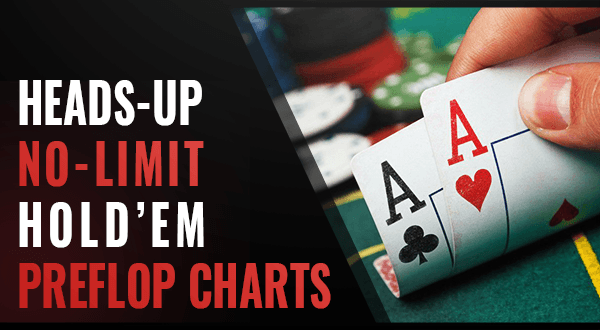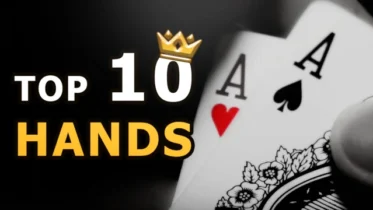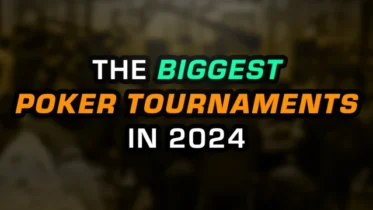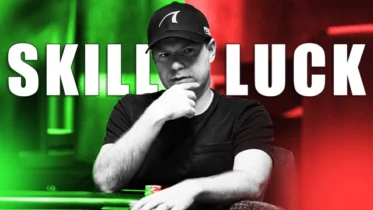Playing from late position, hands like suited gappers can flop extremely well and are worth raising. Even when facing a loose, action player, it is important to not play scared and to pursue value when you have enough strength. Follow this hand below, and consider how you would play each spot with your own poker tournament strategy.
Scenario: You are nine-handed playing in a $500 buy-in tournament at the Hard Rock in Hollywood, Florida. It folds around to you in the cutoff and you look down at Q♣-9♣.
The Game: $500 Buy-In NLH Tournament
Effective Stack: 53 Big Blind
Your Hand: Q♣-9♣
Preflop Analysis
Unless you are at a strong table and aren’t comfortable playing Q♣-9♣ postflop, folding is overly tight. If you are competent and well studied in limping strategies you can consider calling, but this hand plays way better if you raise.
Q♣-9♣ is a great hand from late position that essentially functions as a high-suited connector. From late position you want to be playing the majority of your Q-x suited hands, especially if you have weaker players to your left. Execute a standard 3,500 raise and see what the flop gives you.
Action: You raise 3,500 and only the loose, action player in the small blind calls. The flop is Q-6-3 and your opponent checks.
Playing Your Flopped Top Pair
The Pot: 10,200
The Board: Q♠-6♥-3♣
Effective Stack: 51 Big Blinds Effective
Flop Analysis
The most common and mandatory play in this spot is to bet. You do not need to bet large since the board is pretty uncoordinated, betting large would either force your opponent to fold out worse hands or play perfectly when they happen to have a flopped set. Your opponent would expect you to bet small with the majority of your range, anywhere between 25% and 33% pot would be an ideal size that will draw calls from worse hands.
Action: You bet 4,000 and your opponent calls. The turn is the A♥ and your opponent checks.

Be prepared for anything your opponents may throw at you with these preflop charts
Responding To An Annoying Overcard On The Turn
The Pot: 18,200
The Board: Q♠-6♥-3♣-A♥
Effective Stack: 48 Big Blinds Effective
Turn Analysis
Certainly not a great turn card for your hand. It is important to ask yourself: if you bet, are you realistically getting called by a worse hand? The answer is most definitely no, which should dissuade you from betting. Considering your opponent’s wide ranges as a loose, action player, you may very well be ahead, but they could also be holding an ace that may hit you with a check-raise.
The majority of the time, checking is the right play. While you could squeeze out some potential value from a paired six or a draw, you would much rather check the best hand than bet and get check-raised off of it. Check your hand, and reevaluate your options on the river.
Playing Second Pair On The River
The Pot: 18,200
The Board: Q♠-6♥-3♣-A♥-4♠
Effective Stack: 48 Big Blinds Effective
River Analysis
The river has presented you with an extremely tricky spot. You can totally have the best hand which would indicate you should go for value, but it is important to consider what worse hands would realistically call you.
If you execute a large bet, no worse hand is going to call you. If you bet small, maybe you get called by worse, but it is important you are able to distinguish that for yourself at the poker table. You could very well be beat here by a better queen, which means you need to consider both how often you are being called by a worse hand, as well as how often your opponent will be holding a better queen.
It is also critical to consider whether your opponent is capable of making a check-raise bluff, if they are skilled enough to force you off of the best hand, checking is your best option.
Your river decision is a tough and close one, if you think you are in a good position to pursue some additional value it is okay to make a small bet, but it is also alright to check it to showdown and avoid putting yourself in a tough spot.
Conclusion
You elect to check, and your loose opponent lives up to their wide ranges flipping over 6♣-4♦. There are plenty of lessons to learn from this hand, especially when it comes to considering going for thin value on the river. If you had been holding a better kicker like a king or a jack you would have had a hand worth pursuing value with, but lucky for you checking it back kept you from facing what would have likely been a nasty check-raise. If you enjoyed this hand analysis, be sure to check out my previous article where I break down how to defend the big blind.



